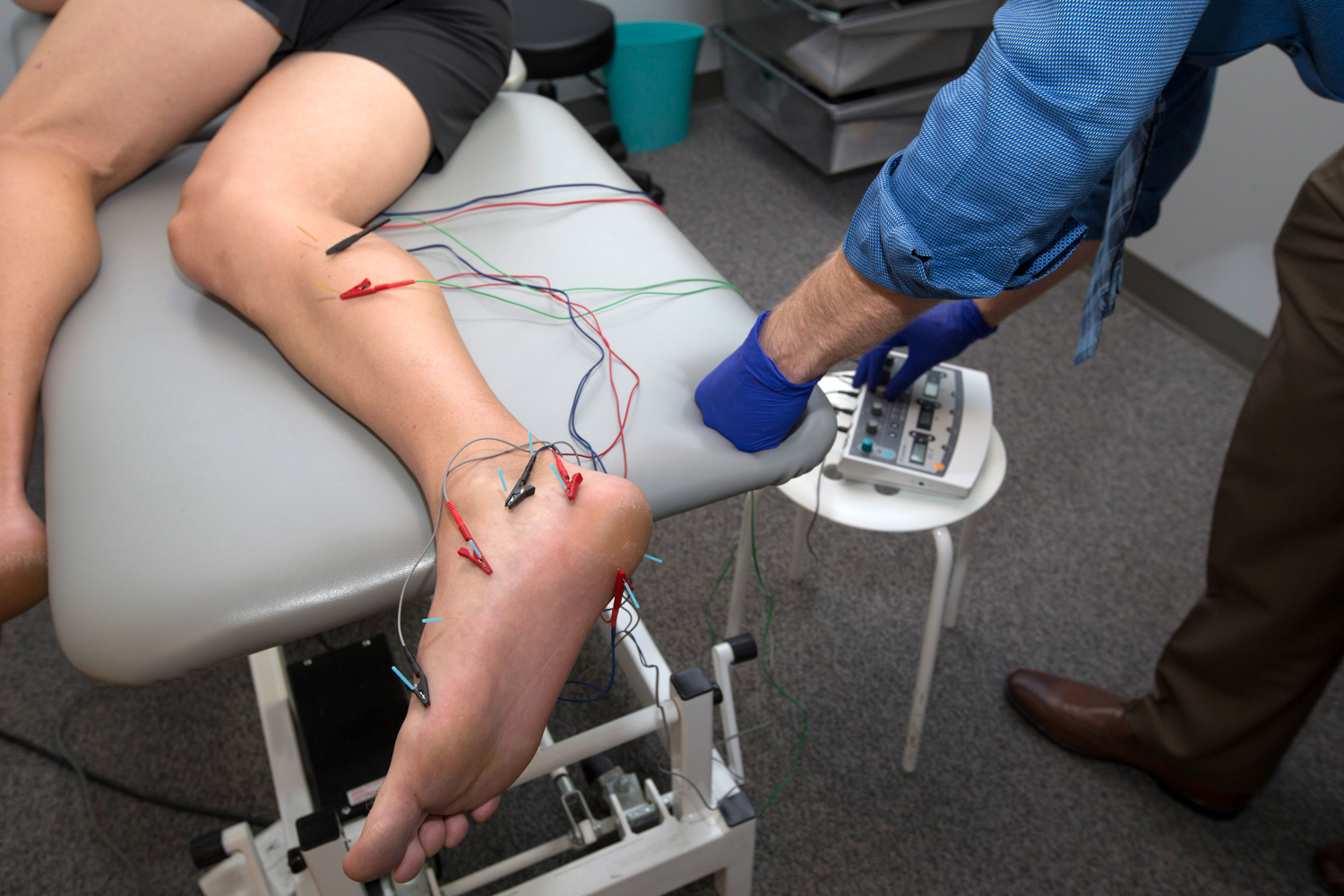Plantar fasciitis is the most common cause of plantar heel pain estimated to affect 10% of the general population through their lifetime. Proper nomenclature of the pathology is dependent on the tissue involved and how long the symptoms have been in existence. “Fasciitis” suggests an acute inflammatory response, where “fasciosis” illustrates a chronic degenerative response without inflammation. Both terms describe impairments to the insertion of the plantar fascia and/or toe flexors as they attach to the medial heel. Both pathologies are also categorized by increased pain on the inside/plantar aspect of the heel, namely during the “first steps” in the morning or increased weight bearing activities throughout the day.
Manual therapy with exercise has proven to be the best course of action to manage pain and dysfunction of plantar fasciitis, however a recent study investigated the benefit of Electrical Dry Needling (EDN) as an adjunct treatment (Dunning et al. PLOSone, 2018). The study divided 111 participants into 2 groups (standard treatment without EDN vs. standard treatment with EDN). Both groups received up to 8 treatments in a 4-week period. The authors concluded the EDN group’s pain and disability improved significantly at 3 months after treatment compared to treatment without EDN.
To learn more about how Electrical Dry Needling can decrease pain and improve function, contact your local, trusted Physical Therapist.

